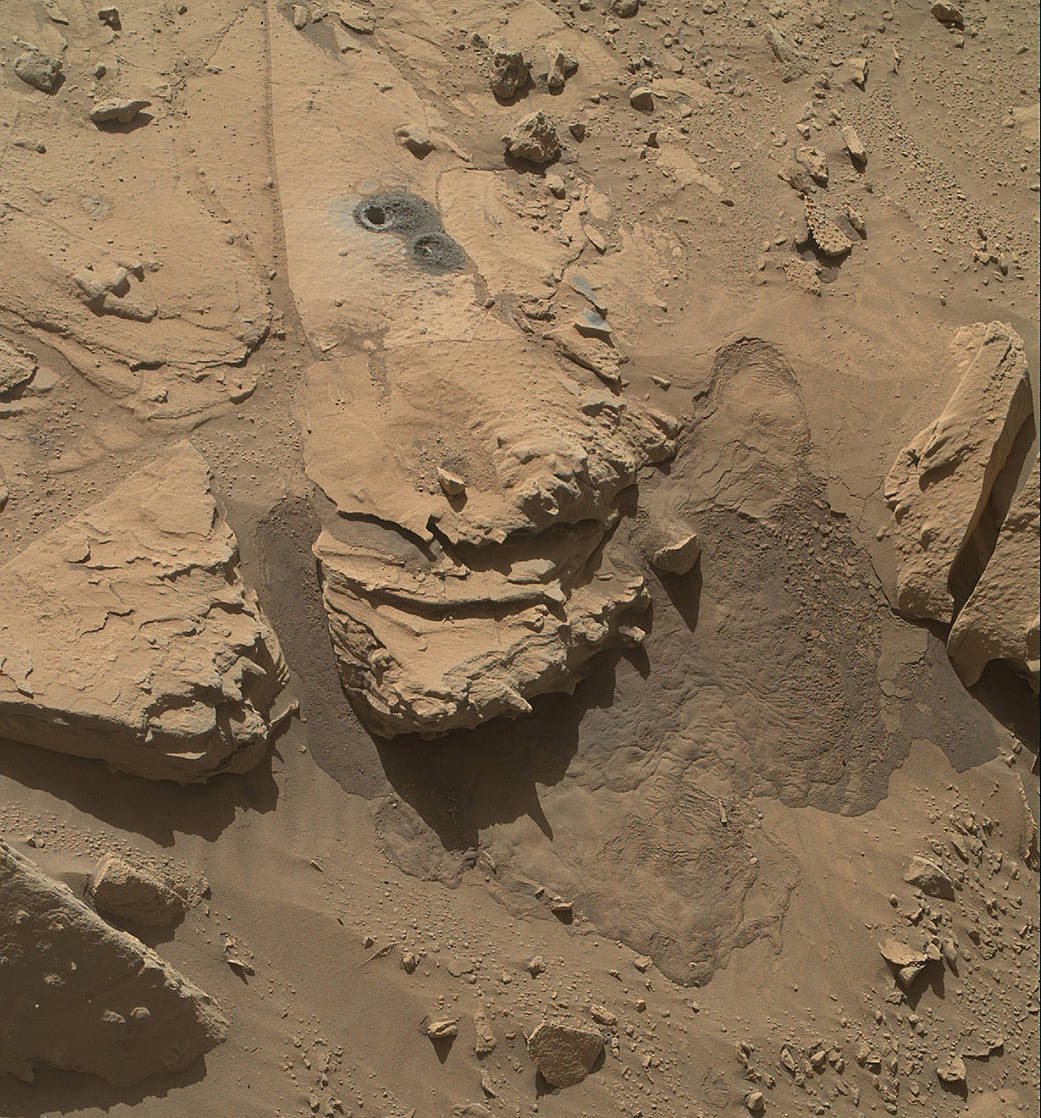This view from the Mars Hand Lens Imager (MAHLI) on NASA’s Curiosity Mars Rover shows the rock target “Windjana” and its immediate surroundings after inspection of the site by the rover. The drilling of a test hole and a sample collection hole produced the mounds of drill cuttings that are markedly less red than the other visible surfaces. This is material that the drill pulled up from the interior of the rock.
This view is from the 627th Martian day, or sol, of Curiosity’s work on Mars (May 12, 2014).
The open hole from sample collection is 0.63 inch (1.6 centimeters) in diameter. It was drilled on Sol 621 (May 5, 2014). A preparatory “mini drill” hole, to lower right from the open hole, was drilled on Sol 615 (April 29, 2014) and subsequently filled in with cuttings from the sample collection drilling.
Two small patches of less-red color to the right of the drill holes are targets “Stephen” (higher) and “Neil,” where multiple laser hits by Curiosity’s Chemistry and Camera (ChemCam) instrument blasted some of the reddish surface dust off the surface of the rock.
The vigorous activity of penetrating the rock with the rover’s hammering drill also resulted in slides of loose material near the rock. For comparison to the site before the drilling, see the Sol 609 image of Windjana at http://photojournal.jpl.nasa.gov/catalog/PIA18087.
MAHLI was built by Malin Space Science Systems, San Diego. NASA’s Jet Propulsion Laboratory, a division of the California Institute of Technology in Pasadena, manages the Mars Science Laboratory Project for the NASA Science Mission Directorate, Washington. JPL designed and built the project’s Curiosity rover.
Credit: NASA/JPL-Caltech/MSSS



























